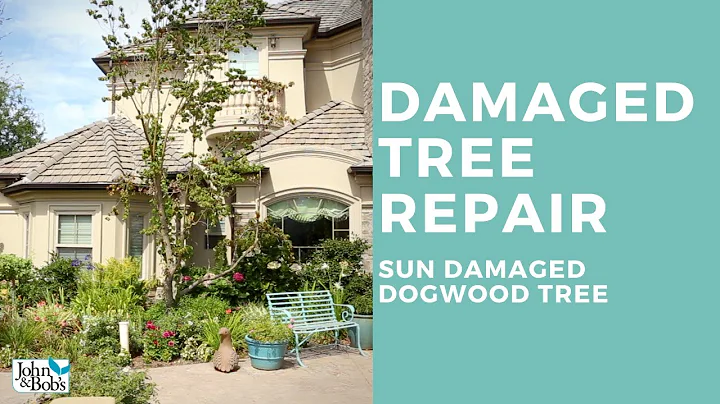Mastering Bonsai Repotting: A Step-by-Step Guide for Healthy Growth
Table of Contents:
- Introduction
- Tools Needed for Repotting a Bonsai Tree
- Removing the Old Soil
- Loosening and Cutting the Roots
- Preparing the Pot and Drainage Screens
- Securing the Roots to the Pot
- Positioning the Tree in the Pot
- Filling the Pot with Soil
- Removing Air Pockets
- Watering the Tree
- Conclusion
Repotting Your Bonsai Tree: A Step-by-Step Guide
Introduction:
Taking care of a bonsai tree involves various tasks, and one of the most important ones is repotting. Repotting helps provide essential nutrients and promotes healthy root growth. In this guide, we will walk you through the process of repotting your bonsai tree, ensuring its well-being and longevity.
-
Tools Needed for Repotting a Bonsai Tree:
Before you begin repotting your bonsai tree, it's essential to gather the necessary tools. These tools include plastic drainage mesh, shears, a root cutter, a wire cutter, 2mm wire, and a root hook. Each tool serves a specific purpose in the repotting process, ensuring successful transplantation.
-
Removing the Old Soil:
The first step in repotting your bonsai tree is removing the old soil. This process requires patience and precision to avoid damaging the roots. By gently using a root hook, you can loosen the soil and remove it without harming the roots. It's crucial to remove around 70 to 80% of the old soil to create ample space for the tree in its new pot.
-
Loosening and Cutting the Roots:
After removing the old soil, it's essential to loosen and cut the roots. This step helps stimulate new root growth and ensures the tree's overall health. Using a root cutter, carefully cut any large or unnecessary roots. With the juniper nana species, you can be less cautious, as they are resilient and can tolerate root pruning.
-
Preparing the Pot and Drainage Screens:
To prepare the pot, cut drainage screens from plastic mesh and place them over the drainage holes. This prevents soil from falling out while allowing for proper water drainage. Additionally, use 2mm wire to create loops and secure the screens inside the pot, ensuring they stay in place during the repotting process.
-
Securing the Roots to the Pot:
Fastening the roots to the pot is crucial to prevent loosening and drying out. By feeding wires through the pot's bottom and creating an X-shaped structure, you can secure the roots tightly. This ensures stability and promotes healthy root development.
-
Positioning the Tree in the Pot:
Positioning the bonsai tree correctly in the pot is essential for aesthetic appeal and balance. Give slightly more room at the front of the pot to create a pleasing visual effect. Ensure that the tree is centered and aligned with the pot, showcasing its best features.
-
Filling the Pot with Soil:
Carefully fill the pot with a mixture of aadama and lava soil. This mixture provides optimal moisture retention and drainage, creating a healthy environment for the bonsai tree. Start by creating a small hill in the middle of the pot and gradually add soil until all the roots are covered.
-
Removing Air Pockets:
To prevent the roots from drying out, it's crucial to remove any air pockets. Use a repotting stick to gently press the soil and fill in any gaps. Ensuring that there are no air pockets guarantees that the roots receive proper moisture and nutrients.
-
Watering the Tree:
After repotting, thoroughly water the bonsai tree. Water all the soil, allowing it to rinse out any fine particles and dust. Proper watering helps settle the soil and provides the tree with the necessary hydration.
-
Conclusion:
Repotting your bonsai tree is an essential task for its overall health and growth. By following the step-by-step guide, you can ensure that your bonsai thrives in its new pot, providing you with years of enjoyment and beauty.
Pros:
- Promotes healthy root growth
- Provides essential nutrients
- Prevents root rot
- Improves the overall health of the tree
Cons:
- Risk of damaging the roots if not done carefully
- Potential for air pockets if not filled properly
Highlights:
- Repotting a bonsai tree is crucial for its well-being and longevity.
- Using the right tools and following the proper steps ensures successful transplantation.
- Loosening and cutting the roots stimulates new growth and enhances overall health.
- Proper positioning in the pot and filling with the right soil mixture is essential.
- Removing air pockets and thorough watering promotes hydration and prevents root drying.
FAQs:
Q: How often should I repot my bonsai tree?
A: Bonsai trees generally require repotting every 2-3 years, depending on their growth rate and root development.
Q: Can I repot my bonsai tree at any time of the year?
A: It is recommended to repot bonsai trees during their dormant period in early spring or late winter to minimize stress on the tree.
Q: What type of soil is best for bonsai trees?
A: A well-draining soil mixture of aadama and lava is commonly used for bonsai trees, promoting healthy root development and moisture retention.
Q: Can I use regular garden soil for repotting my bonsai tree?
A: It is not advisable to use regular garden soil as it may not provide the proper drainage and aeration bonsai trees require. Specialized bonsai soil mixtures are recommended.
Resources:







